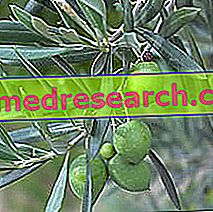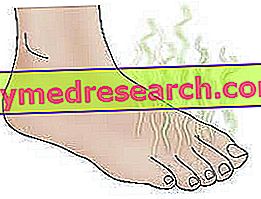
Scientific name
Olea europaea
Family
Oleaceae
Origin
Asia Minor
Used Parts
Drug consisting of dried and crushed leaves and fruits
Chemical constituents
- Fatty acids (saturated and unsaturated);
- oleuropein;
- triterpenes;
- Flavonoids.
Olive Tree in Herbal Medicine: Olive Properties
In vitro, on an experimental level, the fresh leaves of the plant have been shown to act favorably on cholesterol, blood sugar and blood pressure (diuretic and vasodilator effect).
The dried olive leaves, instead, used in decoction are exploited against gout and rheumatism.
Olive oil is fundamental in nutrition and not only: it is a precious food both for the vitamin component with antioxidant activity and for fatty acids, but it is also used as an excipient for numerous galenic preparations and medicinal specialties.
Biological activity
Although its use has not obtained official approval for any type of therapeutic indication, numerous properties are attributed to the olive. These include hypoglycemic, antioxidant, antiarrhythmic, hypotensive and spasmolytic activities in the intestinal smooth muscle. In particular, these actions seem to be mainly attributed to the flavonoids and phenols contained in the plant.
In some animal studies, olive leaves have been shown to be able to induce a hypoglycemic effect in diabetic rats.
Also the antioxidant action of the olive has been confirmed by studies conducted on animals. In particular, olive leaves - thanks to the flavonoids they contain - have shown the ability to reduce oxidative damage in the liver and kidneys in diabetic rats.
Other in vitro research, on the other hand, confirmed the myorelaxant properties of the olive exerted at the level of intestinal smooth muscle.
Finally, a clinical study conducted in hypertensive patients showed that the daily administration of about 1.6 grams of olive leaf extract (in the form of capsules) is able to induce a significant lowering of blood pressure. The olive extract was well tolerated and no side effects were reported. However, a small but significant increase in blood glucose and calcium levels occurred in the study patients.
Olive in folk medicine and homeopathy
In folk medicine, olive leaves are used for the treatment of arteriosclerosis, hypertonia, gout, rheumatism and diabetes mellitus; as well as being used as a remedy against fever.
The plant oil, instead, is used in traditional medicine as an internal remedy for the treatment of inflammation of the gall bladder, cholangitis, jaundice, gastrointestinal ulcers, constipation, flatulence and kidney stones.
Externally, however, folk medicine uses this oil in the treatment of eczema, psoriasis, burns (including sunburn) and rheumatism.
The olive tree is also used in homeopathic medicine, where it can be found in the form of granules, drops, mother tincture and glyceric macerate.
In this context the plant is used as a remedy against fever, high blood pressure, arteriosclerosis, hypercholesterolemia, hypertriglyceridemia, diabetes, diabetic ulcerations and retinopathies, rheumatoid arthritis, asthenia and as a remedy to promote diuresis.
The amount of homeopathic remedy to be taken can be different between one individual and another, also depending on the type of disorder to be treated and the type of homeopathic preparation and dilution that is intended to be used.
Contraindications
Avoid taking olive trees in case of hypersensitivity to one or more components.
Furthermore, the use of olives is also contraindicated in patients with cholelithiasis, as it can cause the onset of biliary colic.
Pharmacological Interactions
- summation effects with oral hypoglycemic agents.



